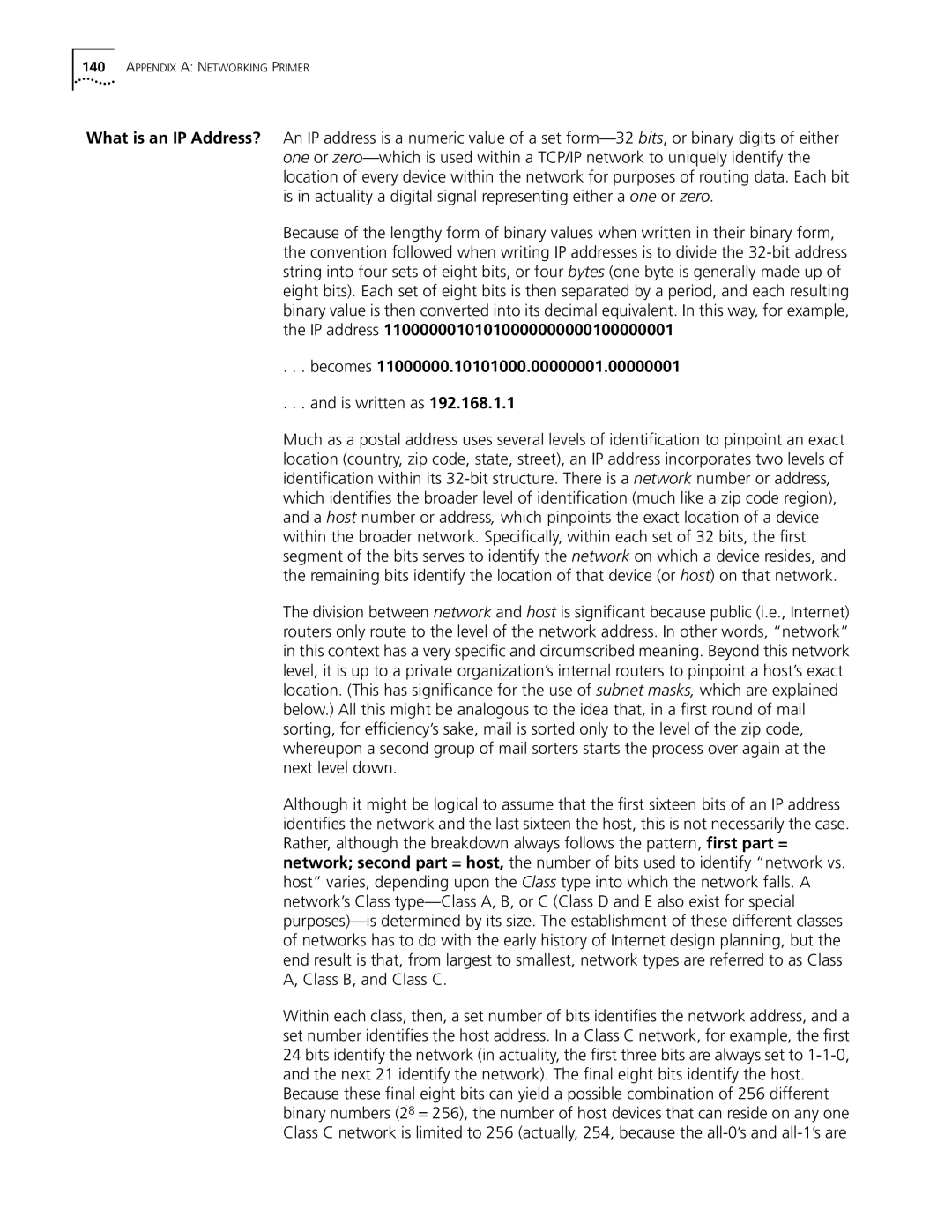140APPENDIX A: NETWORKING PRIMER
What is an IP Address? An IP address is a numeric value of a set
Because of the lengthy form of binary values when written in their binary form, the convention followed when writing IP addresses is to divide the
. . . becomes 11000000.10101000.00000001.00000001
. . . and is written as 192.168.1.1
Much as a postal address uses several levels of identification to pinpoint an exact location (country, zip code, state, street), an IP address incorporates two levels of identification within its
The division between network and host is significant because public (i.e., Internet) routers only route to the level of the network address. In other words, “network” in this context has a very specific and circumscribed meaning. Beyond this network level, it is up to a private organization’s internal routers to pinpoint a host’s exact location. (This has significance for the use of subnet masks, which are explained below.) All this might be analogous to the idea that, in a first round of mail sorting, for efficiency’s sake, mail is sorted only to the level of the zip code, whereupon a second group of mail sorters starts the process over again at the next level down.
Although it might be logical to assume that the first sixteen bits of an IP address identifies the network and the last sixteen the host, this is not necessarily the case. Rather, although the breakdown always follows the pattern, first part = network; second part = host, the number of bits used to identify “network vs. host” varies, depending upon the Class type into which the network falls. A network’s Class
Within each class, then, a set number of bits identifies the network address, and a set number identifies the host address. In a Class C network, for example, the first 24 bits identify the network (in actuality, the first three bits are always set to
Because these final eight bits can yield a possible combination of 256 different binary numbers (28 = 256), the number of host devices that can reside on any one Class C network is limited to 256 (actually, 254, because the
